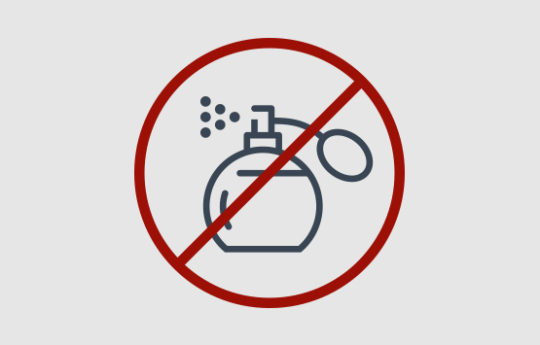There are a large number of products on the market that are offered for odor removal, but many of these products contain perfume. It can be camouflaged on the label as fragrances or essential oils, but what they all have in common is that they "deodorize" by drowning out the bad smell with other fragrances, so that the indoor climate is polluted not only with the bad smell, but now also with often strong allergenic perfumes. This is documented by many of the Danish Environmental Protection Agency's projects, where the contents of air fresheners, scent balls etc. have been analysed.
When working with odor remediation, claims service companies are obliged to use the least dangerous products according to the Working Environment Act, so that they are guaranteed a good working environment. Another side of the matter is that they do not want to leave residual chemicals such as perfume in the homes where they deodorise, as it pollutes people's indoor environment as mentioned above.
Chlorine dioxide technology – the chemical approach
One of the ways in which perfume can be avoided in an odor remediation agent is through the use of chlorine dioxide technology. Instead of camouflaging the smell with fragrances, Chlorine Dioxide attacks and solves the real problem, namely by breaking down the organic molecules that are the bad smell. Chemically speaking, it is an active substance that enters and breaks down the odorous substances by oxidizing and burning them to pieces. And when the smelly substances are dead, they turn into salt and oxygen, so no chemical residue is left in people's homes.
Chlorine dioxide for deodorization is found in boats ProtoxHysan as a liquid or as a gas-generating solid i ProtoxAbScent the bag. The choice of method depends on the type of task.
Enzyme technology – the biological approach
In contrast to the chemical process with chlorine dioxide, there is an enzyme technology, which is a more biological process. According to John Lundsgaard, Technical Manager, Chemist and Biologist at Protox, the enzyme technology uses bacteria that are nature's own invention, which make enzymes that break down the odorous substances by eating them.
"When we eat, we have enzymes in our stomachs and intestines that break down the food into something that can pass into the bloodstream and be transported around to the cells. When we have enzymes that attack odorous substances, or the substances that sit and secrete the smell, then it is broken down into non-smelling substances – at best carbon dioxide and water – if it is completely broken down. And there we make use of nature's own invention, which is precisely bacteria that make enzymes that break down, live and eat the odorous substances. Put simply, the bacteria digest the substances and use their enzyme systems to break them down, so the smell disappears", explains John.
Where enzyme technology also stands out from chlorine dioxide is that in liquid form it does not enter and bleach the areas where products using the technology are used. This is an area that has been a challenge for many claims service companies when cleaning movable property with "soft" surfaces such as e.g. upholstered furniture. The product is now available here ProtoxOdourfree, which has been developed using enzyme technology.
Also read the article "Protox Odour-free for cleaning personal belongings”.


